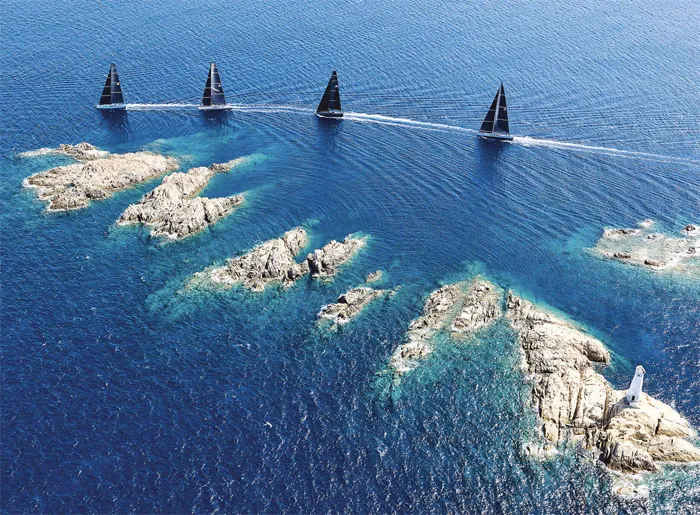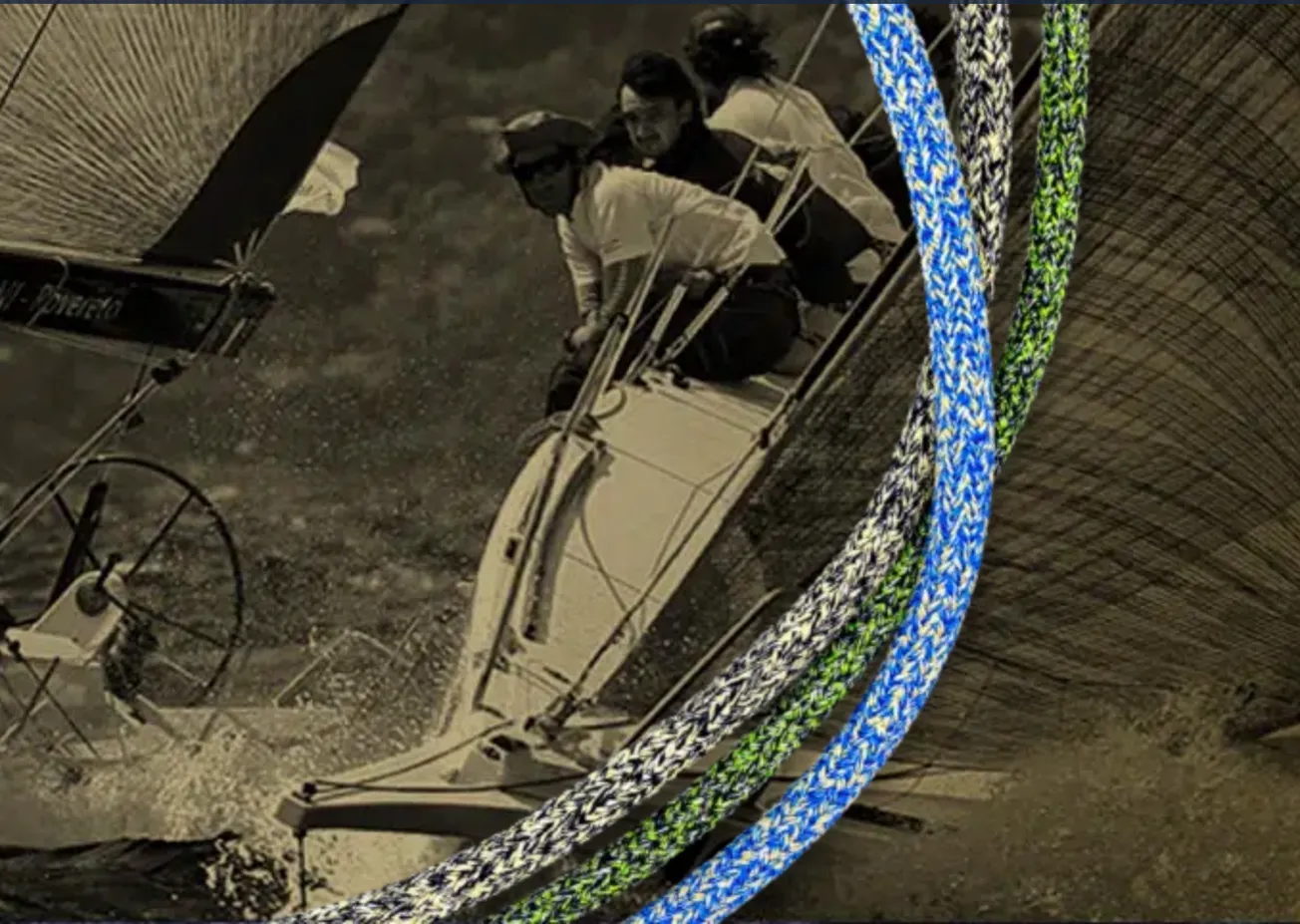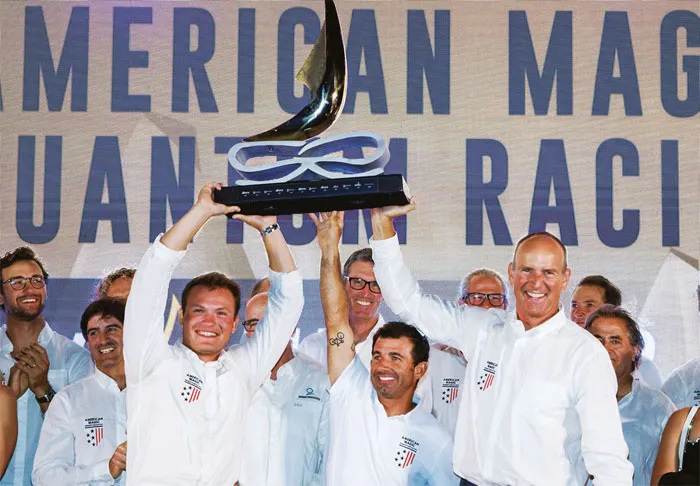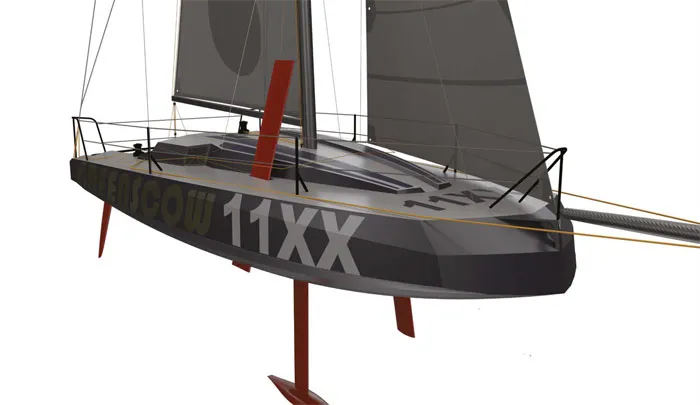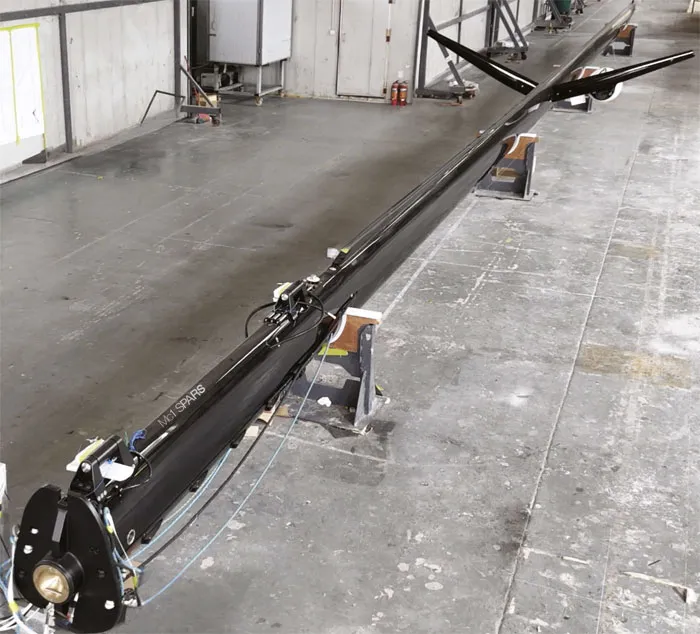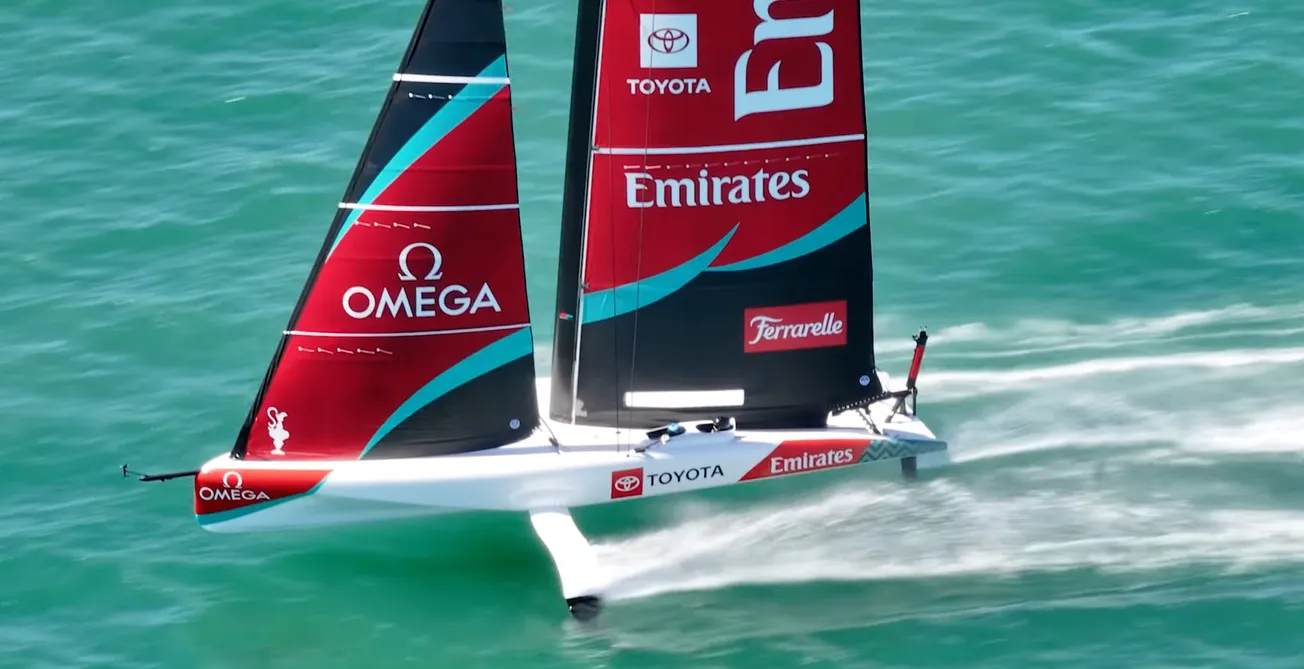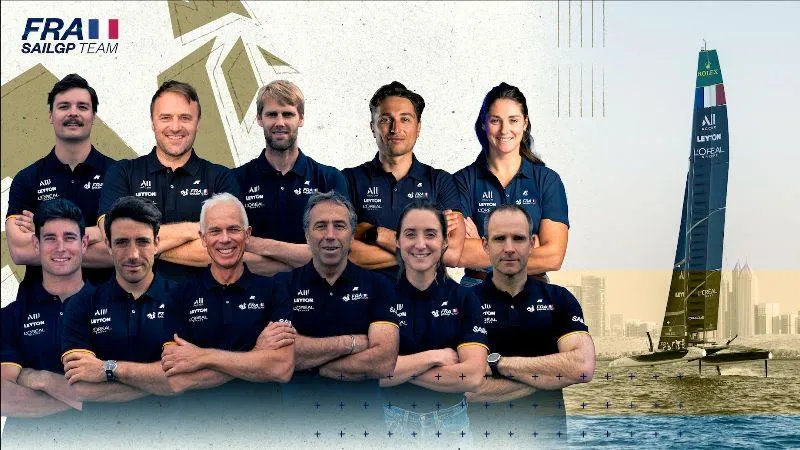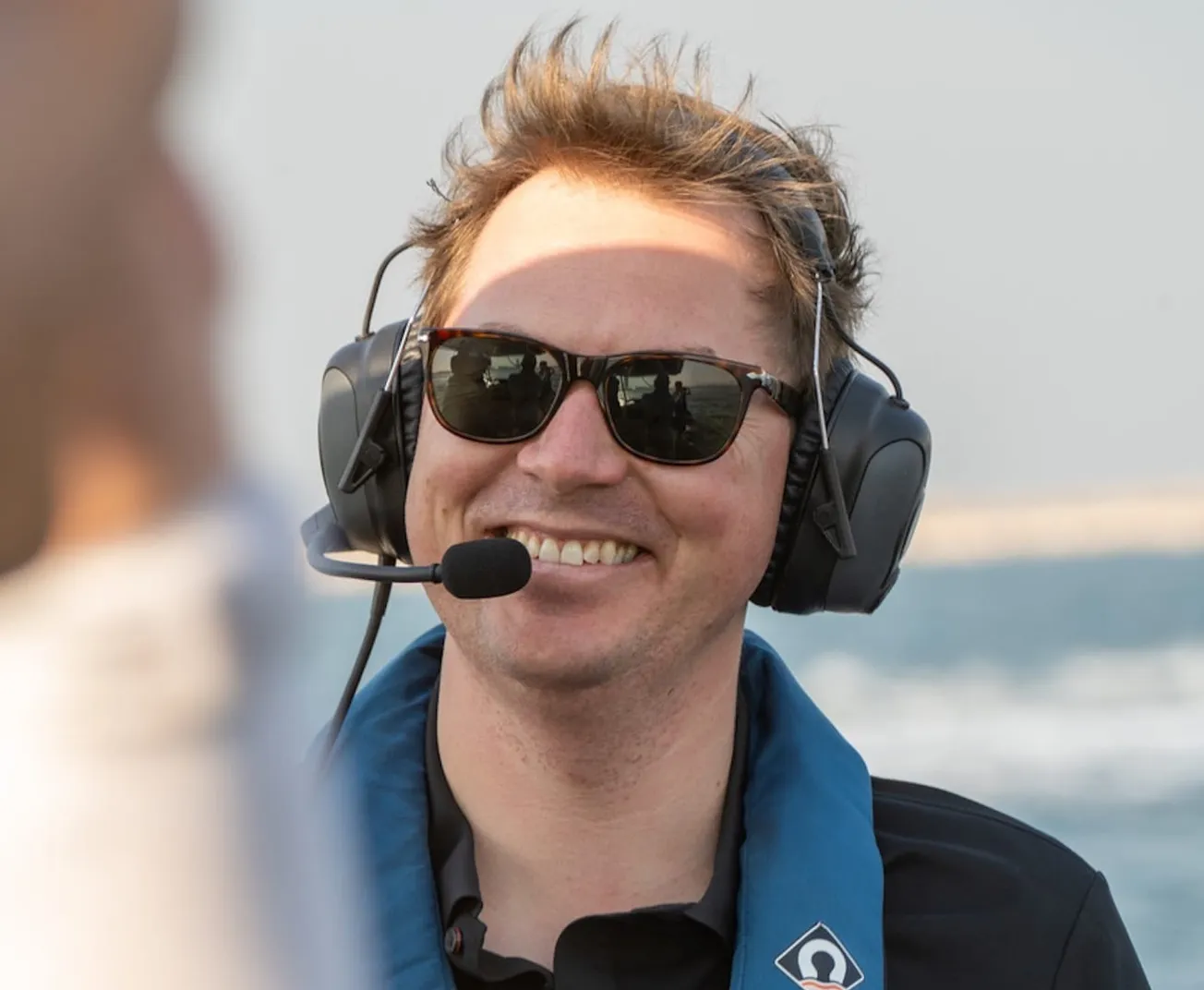

There are few better places in the world to sail than the northeast coast of Sardinia. Hence when it was first discovered as a potential world sailing paradise by his late Highness Aga Khan IV, it was quietly and very discreetly transformed from one of the poorest parts of Italy to one of the richest and most glamorous.
This is our home for the beginning of September. What began in the late 1970s as one of the regular meeting spots of International Class A maxis competing under the IOR Rule, has gradually transformed into the incredible fleet that today meets annually.
Colloquially always known as the ‘Maxi Worlds’, the official name changed to Maxi Yacht Rolex Cup with the advent of Rolex support for the event, which celebrated its 40th anniversary this year, as well as the demise of the IOR Rule. But also, ISAF, now World Sailing, was becoming more rigorous in permitting the use of world championship titles only to classes it formally recognised.
Thus in 2010 the IMA’s established position overseeing the sport of maxi yacht racing internationally was formally recognised by World Sailing and with this the right to hold world championships for maxi yachts. Of course, it is more complex than it sounds, as we now have six performance related sub-classes but only two world titles to award.
This year these two were allocated: Maxi 1 – most of these are raceboats of 80-100ft overall with little or no cruising potential – and Maxi Grand Prix, which has undergone several iterations and name changes from Mini Maxi racer class to Maxi 72 and, since it shed its box rule, Maxi 2.
Allocating the world championships seems to have worked well, as we have never had so many high-quality entries. The new Maxi Grand Prix box is simply defined by an IRC TCC range of 1.600 to 1.699. This class has probably seen more optimisation and innovation than any other rating rule-based keelboat class – quite remarkable given the scale of the yachts.
And despite this class now being at its most open, inviting a range of sizes, shapes, rigs, sails etc, they continue to enjoy very close boat-on-boat racing. Competition in the Maxi Grand Prix division is equally intense off the water, with new technologies constantly explored and sometimes adopted. It is not a game for anyone on a tight budget.
Larger-scale innovations have not just been limited to hull extensions, water ballast with rapid transfer systems, trim tabs, interceptors and other ideas yet to be revealed, yet they all demonstrate the constant will to make these elite Grand Prix boats faster allround yachts. Add to this a high proportion of the world’s best professional sailors supporting usually the only amateur on the boat, the owner, who according to our rules is also the mandated helm.
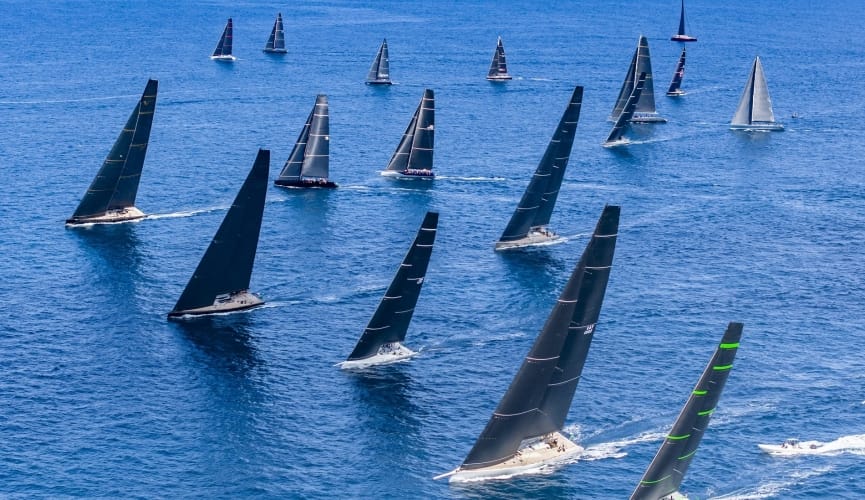
IRC works really well for these boats and corrected times are always close. As an example, in the final race of the 2025 Maxi Rolex Cup, Admiral’s Cup winner Peter Harrison’s Jolt, with the highest rating in the class – also the only yacht currently fitted with a trim tab – beat one of the lowest-rating yachts, Django 7X, by two minutes and twoseconds on the water but by only three seconds on corrected time.
The surprise and very impressive new World Champion was Django7X. That this, the newest boat in the fleet, with very little prior time on the water, could beat seasoned teams like Jolt and Bella Mente (2nd and 3rd on equal points) was astonishing – a tribute to the Botín Partners design team, her builder King Marine, and of course her knowledgeable owner Giovanni Lombardi Stronati and his superb sailing and shore crew led by Vasco Vascotto.
The other World Championship was for the Maxi 1 sub-class and provided a great battle between the 100-footers right to the end. Initially the Mark Mills design V looked dominant but had an unlucky last day. This left a close battle for the title between Bullitt, Leopard 3 and Galateia, with any of them in with a chance going into the final race. Winning the crucial last race took Leopard 3 up to equal points with Galateia – but, frustratingly, losing on countback.
Maxi yacht racing to be this close, at this level, is impressive. Note that Joost Schuijff’s Leopard 3 is now entering her 19th racing season and yet she remains competitive by virtue of a continuous programme of refits and upgrades (removing 10 tons of weight was particularly helpful!), plus a loyal and experienced crew many of whom sailed with previous owner Mike Slade.
Slowly but surely we are also trying to bridge the gender and youth gap in maxi racing. It is good to see we now have two boats with female owner-drivers, Wendy Schmidt and Deep Blue and Pascale Decaux with Tilakkhana II, the latter with a high quotient of female crew including round-the-world racer Dee Caffari. To further encourage this trend, at the latest IMA AGM we voted to give ‘free’ crew allowance for female and under-21 crew members. We have not made it mandatory but it is a push in the right direction.
Finally, it would be unfair not to mention our other IMA classes. Largest and most hotly contested was Maxi 3, again grouped by performance, not hull length, which varied from 60 to 82ft. Last year Aldo Parisotto won in his Mylius 65FD Oscar 3 with Paolo Cian calling tactics. Aldo also won the IMA best-placed member award. There was plenty of good close racing within this class that included three Baltic 68 Café Racers and two Botín 65s, including former RORC Commodore James Neville’s Artemis Bleu, with a crew including Dean Barker.
Maxi 4 was won ‘as always’ by the vintage Vallicelli 78 H2O. She was the only Maxi in the regatta with the full picket fence of results – though matched by the Swan 115 Moat in the Super Maxi class.
The Maxi Yacht Rolex Cup was an opportunity too for teams to add more points to their score in our IMA Maxi Mediterranean Inshore Challenge, which culminates in Les Voiles de Saint Tropez. So far with 30 members eligible it is close at the top, Proteus and Galateia having just swapped the lead after Porto Cervo. Spirit of Lorina, V, Capricorno are next and then a group of four Maxi Grand Prix yachts not far behind.
It will be an exciting end to the season with another record entry for the Saint Tropez regatta. IMA influence in getting our own race committee boat and race area in the Baie de Pampelonne has certainly helped encourage participation – one of our most important roles. Another is to encourage new owners to join and buy boats, old or new, and come and join the fun.
But to have the faith needed to start a new build project at this size requires certainty of stability in rating policy and confidence that there will be a well-managed programme to compete in.
We now have both. A regular annual race calendar and, although we will keep rating systems under review, the IMA board has agreed to continue with IRC for at least another three years.


